- Like
- SHARE
- Digg
- Del
- Tumblr
- VKontakte
- Flattr
- Buffer
- Love This
- Save
- Odnoklassniki
- Meneame
- Blogger
- Amazon
- Yahoo Mail
- Gmail
- AOL
- Newsvine
- HackerNews
- Evernote
- MySpace
- Mail.ru
- Viadeo
- Line
- Comments
- Yummly
- SMS
- Viber
- Telegram
- JOIN
- Skype
- Facebook Messenger
- Kakao
- LiveJournal
- Yammer
- Edgar
- Fintel
- Mix
- Instapaper
- Copy Link
TOP SHOW AND SPORT MUSCLES
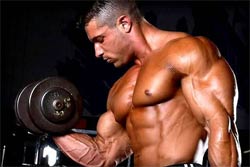 Some people exercise for looks while others exercise for sport and performance. Exercise programs generally vary depending on the personal goals of the individual. Although we all may exercise for different reasons, everyone should strive to have a well-balanced routine in order to avoid muscular imbalances. However, I thought I’d share my opinion of what I believe to be the top show and the top sport muscle groups.
Some people exercise for looks while others exercise for sport and performance. Exercise programs generally vary depending on the personal goals of the individual. Although we all may exercise for different reasons, everyone should strive to have a well-balanced routine in order to avoid muscular imbalances. However, I thought I’d share my opinion of what I believe to be the top show and the top sport muscle groups.
What’s a Show Muscle?
Show muscles are the muscles that impress others when you’re at the beach, pool, or when you’re wearing certain articles of clothing like muscle shirts or skirts. Let’s face it the upper back muscles, traps, and legs (for guys) are usually ignored unless for some reason they are so grossly out of proportion that they’re displeasing to the eye. Show muscles are all about the way they look. Who cares what you bench, squat, how fast you can run, or how high you can jump as long as you look like a Greek God. So what muscles usually garner the most attention from others?
Abs
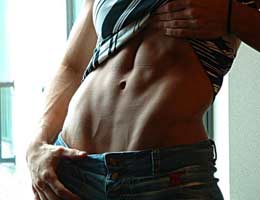 The six pack/flat stomach look is one of the most covenanted looks there is when it comes to show muscles. Because belly fat is usually frowned upon and deemed unattractive in the fitness world, there’s a large population of the fitness world who exercise in order to rid themselves of midsection fat. If you’re looking to improve your midsection, a combination of a sound nutritional plan and exercise program are vital key components.
The six pack/flat stomach look is one of the most covenanted looks there is when it comes to show muscles. Because belly fat is usually frowned upon and deemed unattractive in the fitness world, there’s a large population of the fitness world who exercise in order to rid themselves of midsection fat. If you’re looking to improve your midsection, a combination of a sound nutritional plan and exercise program are vital key components.
Chest (For Men)
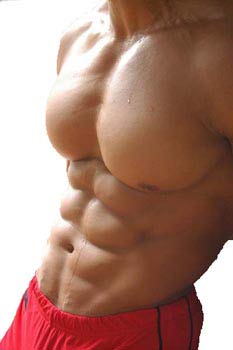 Man boobs can be embarrassing, but a nice full muscular pectoral muscle stands out in a crowd full of shirtless guys. A rock hard chest is definitely an attention getter at the pool and the beach which definitely puts it at the top of the list for show muscles. Try exercises such as barbell and dumbbell bench presses, incline and decline presses, and cable and dumbbell flyes to make your chest a head turner.
Man boobs can be embarrassing, but a nice full muscular pectoral muscle stands out in a crowd full of shirtless guys. A rock hard chest is definitely an attention getter at the pool and the beach which definitely puts it at the top of the list for show muscles. Try exercises such as barbell and dumbbell bench presses, incline and decline presses, and cable and dumbbell flyes to make your chest a head turner.
Legs (For Women)
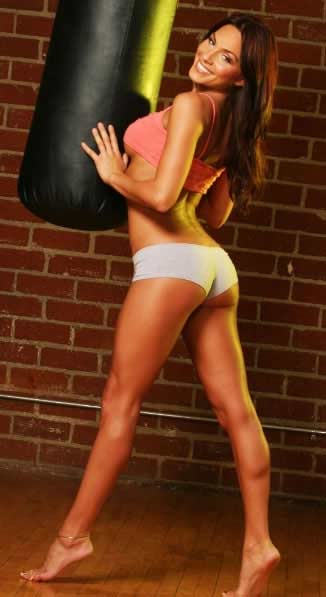 Because of gender differences lower body fat and cellulite plague some women. However, if you’re wearing short shorts, a skirt, or a bikini a nice pair a legs will turn some heads from all directions and that’s exactly why legs are breathtaking show muscles for women. Define, build, and tone your legs with a well-balanced nutritional program and with exercises such as lunges, squats, split squats, and deadlifts.
Because of gender differences lower body fat and cellulite plague some women. However, if you’re wearing short shorts, a skirt, or a bikini a nice pair a legs will turn some heads from all directions and that’s exactly why legs are breathtaking show muscles for women. Define, build, and tone your legs with a well-balanced nutritional program and with exercises such as lunges, squats, split squats, and deadlifts.
Arms
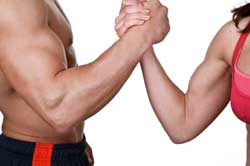 What good is a nice set of pecs and abs when they’re covered up by your shirt or tank top? This is exactly why arms made my list for top show muscles. An attractive pair of toned or muscular arms not only compliments a good looking upper torso, but they also bring attention to the eye when your torso is covered with clothes. Add some size to your arms with bicep and tricep exercises such as dumbbell and barbell curls, skull crushers, and rope pushdowns.
What good is a nice set of pecs and abs when they’re covered up by your shirt or tank top? This is exactly why arms made my list for top show muscles. An attractive pair of toned or muscular arms not only compliments a good looking upper torso, but they also bring attention to the eye when your torso is covered with clothes. Add some size to your arms with bicep and tricep exercises such as dumbbell and barbell curls, skull crushers, and rope pushdowns.
Shoulders
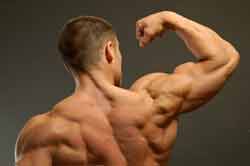 Shoulders frame the upper torso and having a narrow pair of shoulders can give the appearance of being little and/or frail while a wide broad pair of shoulders attracts attention from others because they signify muscularity regardless if they’re covered up or not. Widen up your shoulders with a variety of shoulder presses, lateral and front raises, and reverse flyes.
Shoulders frame the upper torso and having a narrow pair of shoulders can give the appearance of being little and/or frail while a wide broad pair of shoulders attracts attention from others because they signify muscularity regardless if they’re covered up or not. Widen up your shoulders with a variety of shoulder presses, lateral and front raises, and reverse flyes.
What’s a Sport Muscle?
Sport muscles are the muscles used in athletic activity to generate power and explosiveness. For instance, a basketball player with strong glutes and calves would have an uncanny ability to have a high and explosive vertical jump. While core strength definitely plays a key role in athletics, having a great looking midsection won’t help you much on the playing field. When it comes to athletics strength, balance, power, quickness, and a combination of all those are crucial to performance.
Gluteals and Hamstrings
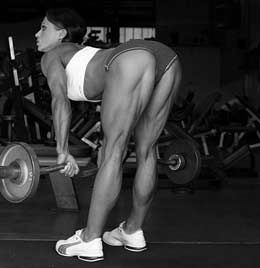 Your hamstrings are located on the back part of your thigh while your gluteals aka glutes are your butt muscles which happen to be the largest muscle group in the body. So it’s no surprise that your glutes play a key role in any athletic activity involving the lower body. Both of these muscles are responsible for the driving force whenever you push off of the ground whether you’re running or leaping. From sprinting and jumping to hiking and cycling, having a strong pair of glutes will aid your performance. Strengthen your hip extensors with traditional exercises such as deadlifts and squats, and with plyometric exercises such as box jumps and jump squats.
Your hamstrings are located on the back part of your thigh while your gluteals aka glutes are your butt muscles which happen to be the largest muscle group in the body. So it’s no surprise that your glutes play a key role in any athletic activity involving the lower body. Both of these muscles are responsible for the driving force whenever you push off of the ground whether you’re running or leaping. From sprinting and jumping to hiking and cycling, having a strong pair of glutes will aid your performance. Strengthen your hip extensors with traditional exercises such as deadlifts and squats, and with plyometric exercises such as box jumps and jump squats.
Quadriceps and Hip Flexors
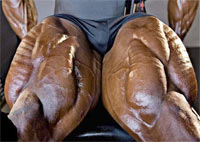 The quadriceps are the muscles located on the front of your thighs and your hip flexors are located on the front part of your hip. These muscles contract to raise your legs upward helping you drive forward while you run. Driving your leg forward is an intricate part of running as well as being able to drive your legs off of the ground; therefore, making the quads and hip flexors key muscle groups for sprinting and running. Improve your quad and hip flexor strength with traditional exercises such as front squats and split squats, and with plyometric exercises such as power step ups and knee tuck jumps.
The quadriceps are the muscles located on the front of your thighs and your hip flexors are located on the front part of your hip. These muscles contract to raise your legs upward helping you drive forward while you run. Driving your leg forward is an intricate part of running as well as being able to drive your legs off of the ground; therefore, making the quads and hip flexors key muscle groups for sprinting and running. Improve your quad and hip flexor strength with traditional exercises such as front squats and split squats, and with plyometric exercises such as power step ups and knee tuck jumps.
Calves
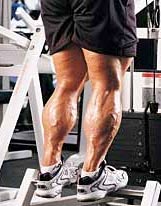 Your calves are the muscles on the back part of your shin. They’re responsible for plantar flexion which happens anytime you raise your heels off the ground. This motion assists the body in pushing off the ground during a run or a jump which is critical to an athlete’s performance. Add explosiveness to your step with traditional exercises like seated and standing calf raises, and plyometric exercises like jump roping and lateral jumps.
Your calves are the muscles on the back part of your shin. They’re responsible for plantar flexion which happens anytime you raise your heels off the ground. This motion assists the body in pushing off the ground during a run or a jump which is critical to an athlete’s performance. Add explosiveness to your step with traditional exercises like seated and standing calf raises, and plyometric exercises like jump roping and lateral jumps.
Lats
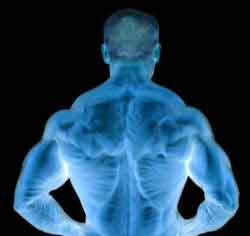 Your latissimus dorsi aka yours lats are the large muscles making up the majority of your back spanning the entire length of your back and also attaching at the humerus (the large arm bone). When you throw your lats act to inwardly rotate your upper arm during the acceleration phase of the throwing motion. Conversely your lats activate to slow down your arm during the deceleration phase. Strengthen your lats with traditional back exercises such as pull-ups and rows, and with plyometric exercises such as medicine ball slams and explosive pull-ups.
Your latissimus dorsi aka yours lats are the large muscles making up the majority of your back spanning the entire length of your back and also attaching at the humerus (the large arm bone). When you throw your lats act to inwardly rotate your upper arm during the acceleration phase of the throwing motion. Conversely your lats activate to slow down your arm during the deceleration phase. Strengthen your lats with traditional back exercises such as pull-ups and rows, and with plyometric exercises such as medicine ball slams and explosive pull-ups.
Triceps
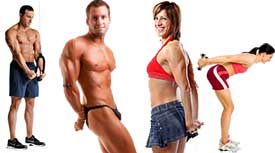 The triceps located on the backside of your arm play a key role in any type of throwing motion where your elbow starts in a flexed position. Because your triceps are responsible for extending your elbow, any time the throw is started with your elbows bent such as throwing a baseball, football, or passing a basketball the triceps play a vital role. Improve tricep explosive power with plyometric exercises such as medicine ball chest passes, and medicine ball soccer throws.
The triceps located on the backside of your arm play a key role in any type of throwing motion where your elbow starts in a flexed position. Because your triceps are responsible for extending your elbow, any time the throw is started with your elbows bent such as throwing a baseball, football, or passing a basketball the triceps play a vital role. Improve tricep explosive power with plyometric exercises such as medicine ball chest passes, and medicine ball soccer throws.
My Final Thoughts
Although all the muscles work synergistically during athletic movements and your favorite show muscle may have been left out, this list is simply my opinion of the top show and sport muscles. However, whether you’re working out to improve performance or working out to improve your looks, it’s important to train all your muscles equally to prevent muscular and length-tension imbalances.
About Julian Brown
JulianBrownTraining.com Julian is the co-owner of The Yard Fitness, an established fitness writer, a professional natural bodybuilder, a fitness & sport nutrition specialist, and a certified personal trainer. He began strength training at the young age of fourteen to improve his sports performance and hasn’t looked back since. Julian is a graduate of Grambling State University, ACE & NASM certified, and he has over a decade of personal experience in strength training.
